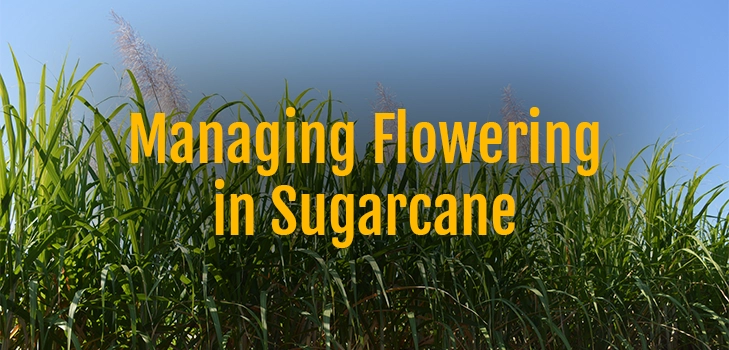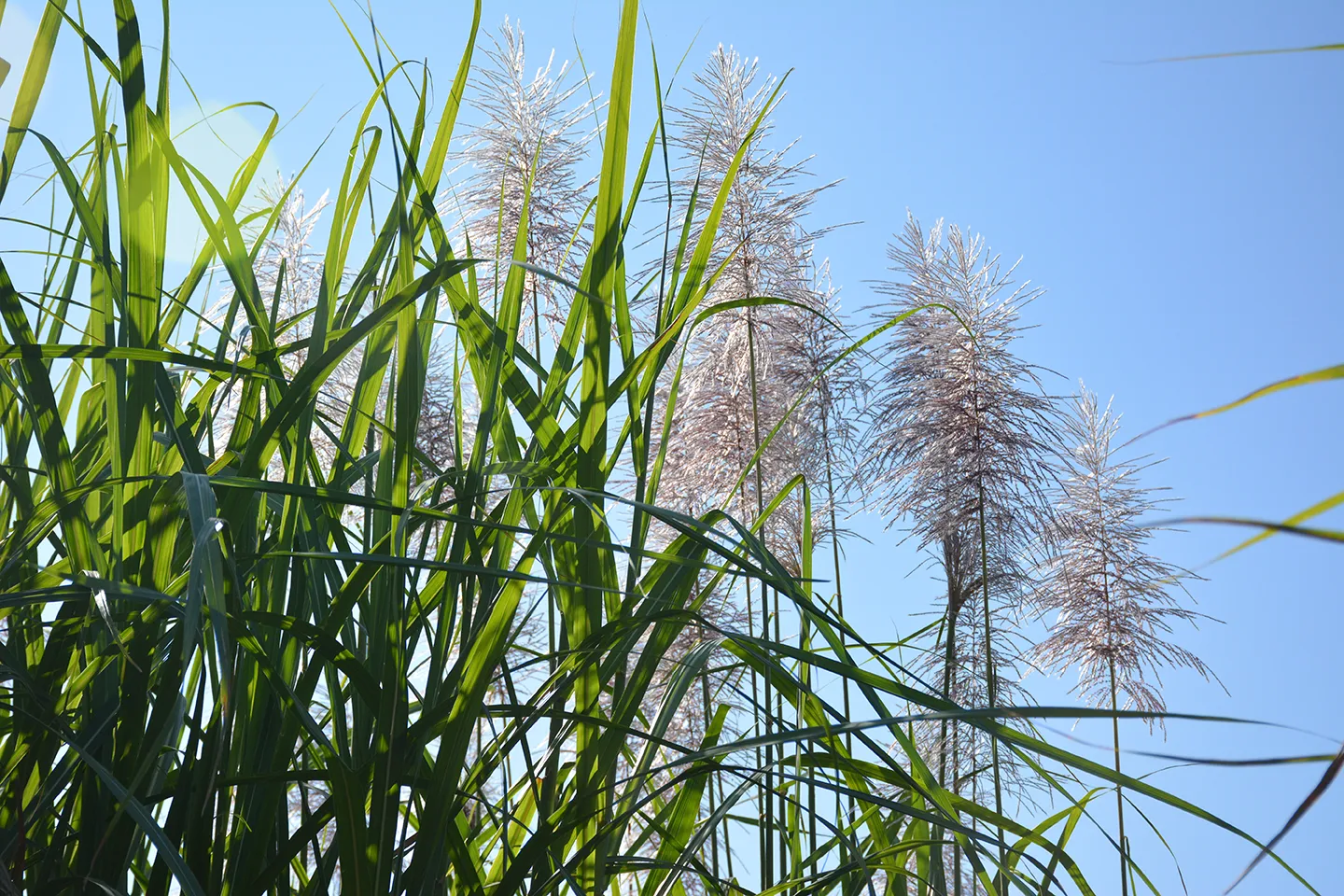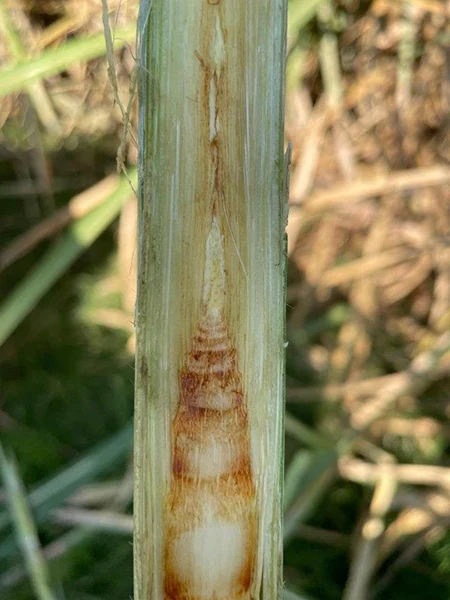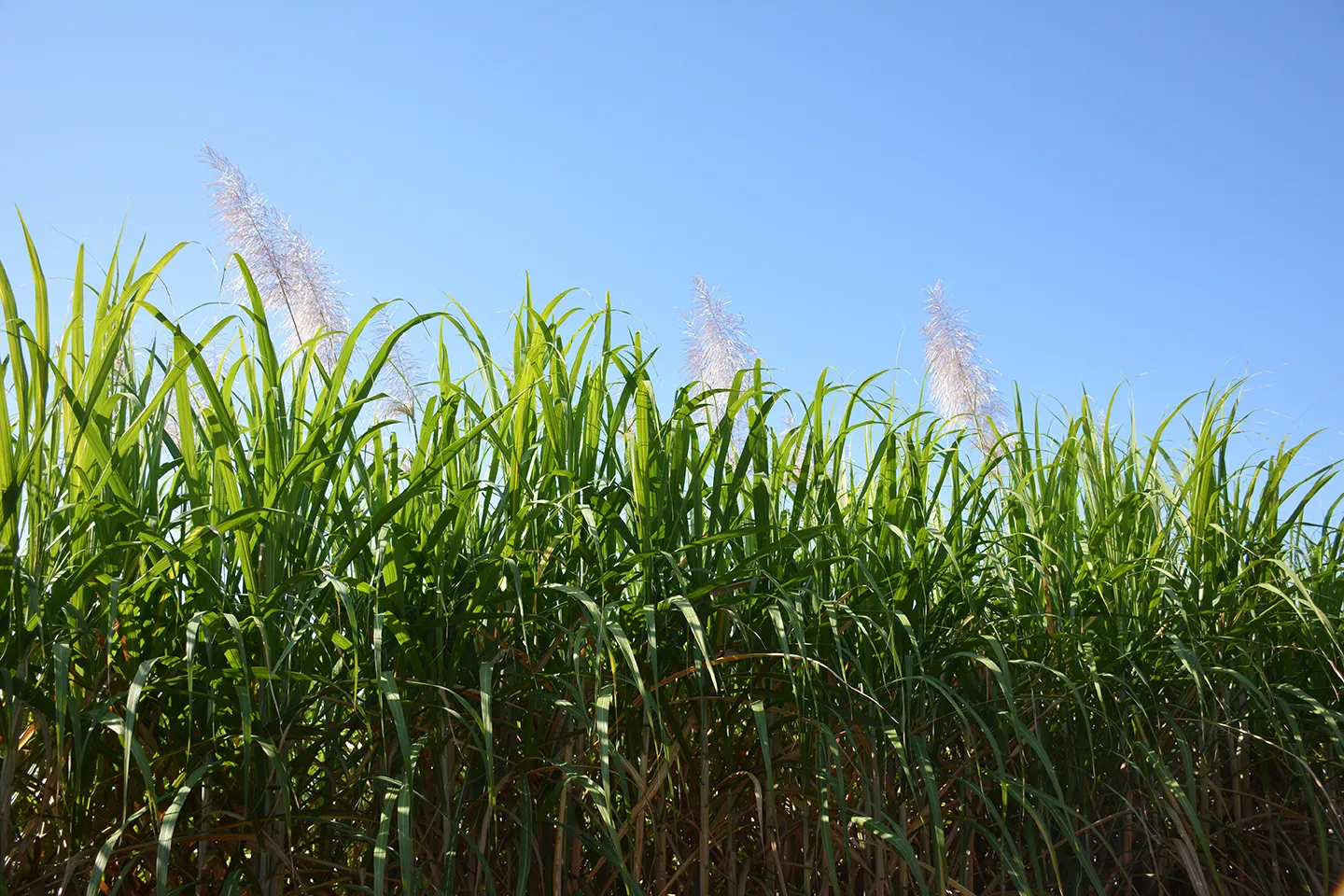


Jan Erasmus (Extension Specialist- Mpumalanga) and Joe Nkala (Extension Specialist- South Coast)

Flowering is induced when the day length drops below 12.5 hours as we move from summer to winter. Flowering is typically profuse when there are high minimum night temperatures and adequate rainfall in February and March. Profuse flowering can negatively affect both cane yield and quality, thereby reducing RV yield if harvesting is delayed for too long after flowering.
Factors affecting flowering (and pithing linked to flowering)

- Day length – The initiation of flowering occurs when the day length is approximately 12.5 hours or shorter. In South Africa the flower initiation period occurs during the last three weeks of March.
- Temperature – Night temperatures of 18°C or higher during the flower initiation period strongly promotes flowering. Daytime temperatures in excess of 32°C during the flower initiation period will reduce flowering.
- Soil moisture – Adequate soil moisture, brought about by sufficient rainfall or irrigation, is prone to cause more profuse flowering. The presence of a water table causes more profuse flowering.
- Crop nutrition – Nitrogen (N) and phosphorus (P) deficiency promotes flowering. However, the potential reduction in flowering in response to N and P application may be negated due to the strong influences of the other factors listed above.
- Variety – Some varieties flower more profusely than others because the propensity of a variety to flower is genetically determined. Planting of sparse-flowering varieties, in fields to be harvested from September to the end of the season, is recommended in South Africa.
Impacts of Flowering
Initially, flowering acts as a strong natural ripening stimulus because it prevents further stalk growth without affecting sucrose production by the mature green leaves. This leads to accelerated storage of sucrose in the stalk (natural ripening). As a result, flowering improves cane quality (RV%), which will compensate for the lower cane yields (t/ha) in the short-term.
Research in South Africa has shown that flowering increases RV yield (t/ha) provided harvesting occurs before the end of September. Delaying harvesting for longer may reduce RV yield because of lower cane yields and quality deterioration induced by profuse side-shooting, the occurrence of sour rot, and senescence (ageing) of the mature green leaves responsible for sucrose production.
Best management practices for harvesting flowering sugarcane
- Flowering fields should be harvested before the end of September if the number of flowering stalks is more than 20% per field.
- Topping height of flowering cane is important, especially where pithing is severe. In such cases, a lower topping height is advisable.
- Avoid carrying flowering fields over, especially if the number of flowering stalks exceed 20%. If flowering sugarcane is not harvested promptly, it becomes vulnerable to eldana and may also develop sour rot.
- Flowering stops vegetative growth and yield will not increase any further. Be careful not to over-estimate the stalk yield of flowered cane.
- Avoid applying chemical ripeners excessively on heavily flowering crops (with over 20% flowering stalks per field) as it could increase the stress levels of the crops.
For more information please refer to SASRI Information Sheet 4.3 Flowering and pithing in sugarcane.

